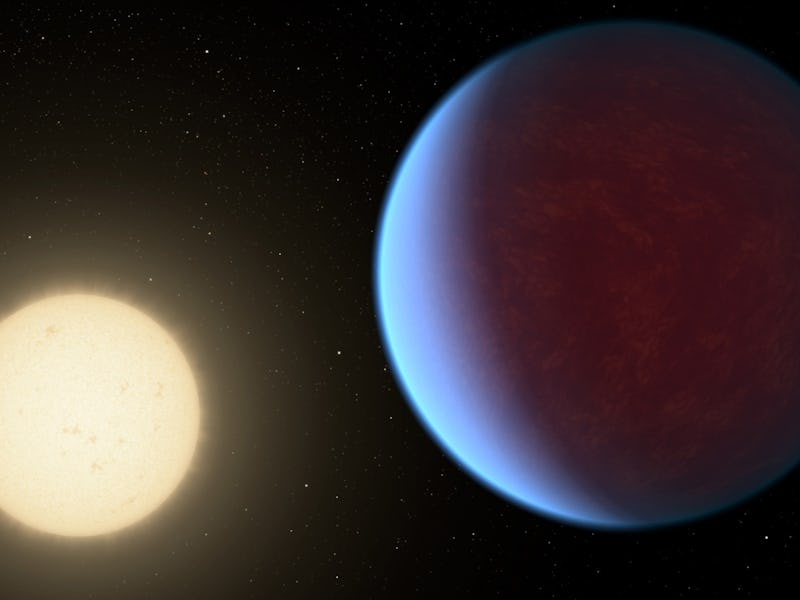Super-Earth 55 Cancri E is a Hell World of Endless Lava, Mind-Melting Heat
But, uh, it's got an atmosphere!

The suddenly frigid temperatures throughout much of the United States may have you considering a getaway to somewhere warm, but please: No matter how enticing the 2,400-degree Fahrenheit temperatures on the exoplanet 55 Cancri e might sound, don’t book a vacation there. It’s pretty much a literal hell world — complete with planet-covering lava. But hey, at least it’s got an atmosphere!
Located about 41 light-years away, 55 Cancri e is roughly twice the diameter and nine times the mass of Earth. Nothing inherently hellish about that, but it’s located so close to its star that it completes an orbit every 18 hours. Even a loser jabroni planet like Mercury knows that’s way too close for a planet to be to its star.
The planet is tidally locked so that one side always faces its star while the other side faces away, but at that kind of distance all of 55 Cancri e is going to be plenty hot. Case in point: Remember those 2,400-degree temperatures? That’s how hot it is on the cold side of the planet, according to new research from a team at NASA’s Jet Propulsion Laboratory. The side facing the star reaches temperatures of 4,200 degrees. In our solar system, the surface of Venus is hottest, and the average temperature there is a relatively piffling 864 degrees.
As described in a paper published Thursday in The Astrophysical Journal, 55 Cancri e maintains these diabolically hot temperatures across the entire planet because it actually has an atmosphere to keep the heat trapped and circulating within, like what happens here and in a far more nightmarish way on Venus.
The finding also suggests the lava on 55 Cancri e must be far more widespread than earlier studies, which theorized lava lakes on the planet, had assumed.
“If there is lava on this planet, it would need to cover the entire surface. But the lava would be hidden from our view by the thick atmosphere,” said JPL scientist and study co-author Renyu Hu in a statement. “Scientists have been debating whether this planet has an atmosphere like Earth and Venus, or just a rocky core and no atmosphere, like Mercury. The case for an atmosphere is now stronger than ever.”
Indeed, previous studies had assumed the exoplanet didn’t have one because the radiation of the nearby star should have long since stripped it away. But somehow the planet has a surprisingly Earth-like atmosphere, one that could possibly contain nitrogen and oxygen, albeit much thicker than we are used to breathing.
It seems almost unnecessary to point out, as NASA does in its announcement of the findings, that neither liquid water or life could survive on the surface of 55 Cancri e, but seriously… there are better travel spots for those seeking warmth. Buenos Aires is supposed to be lovely this time of year.